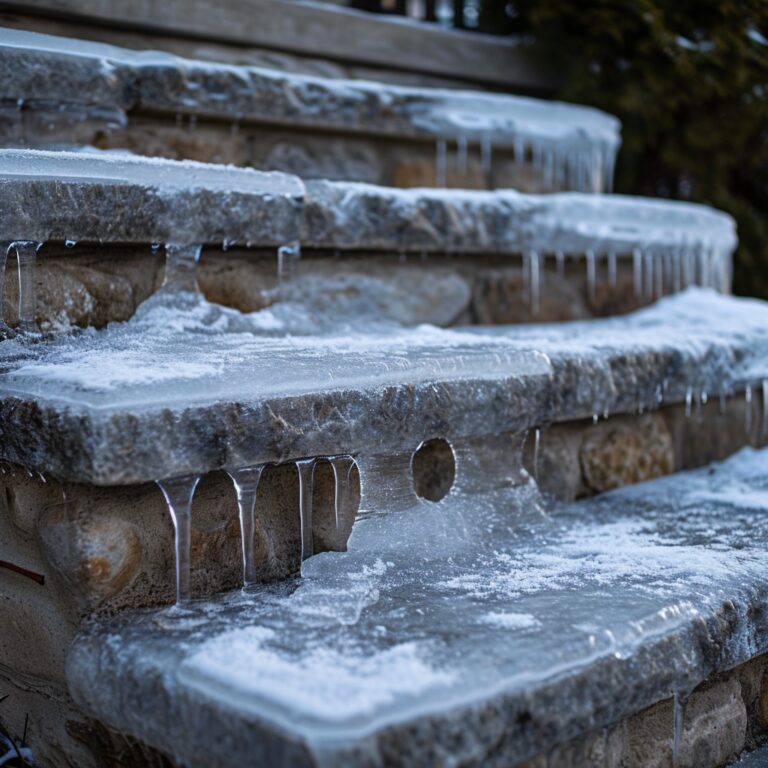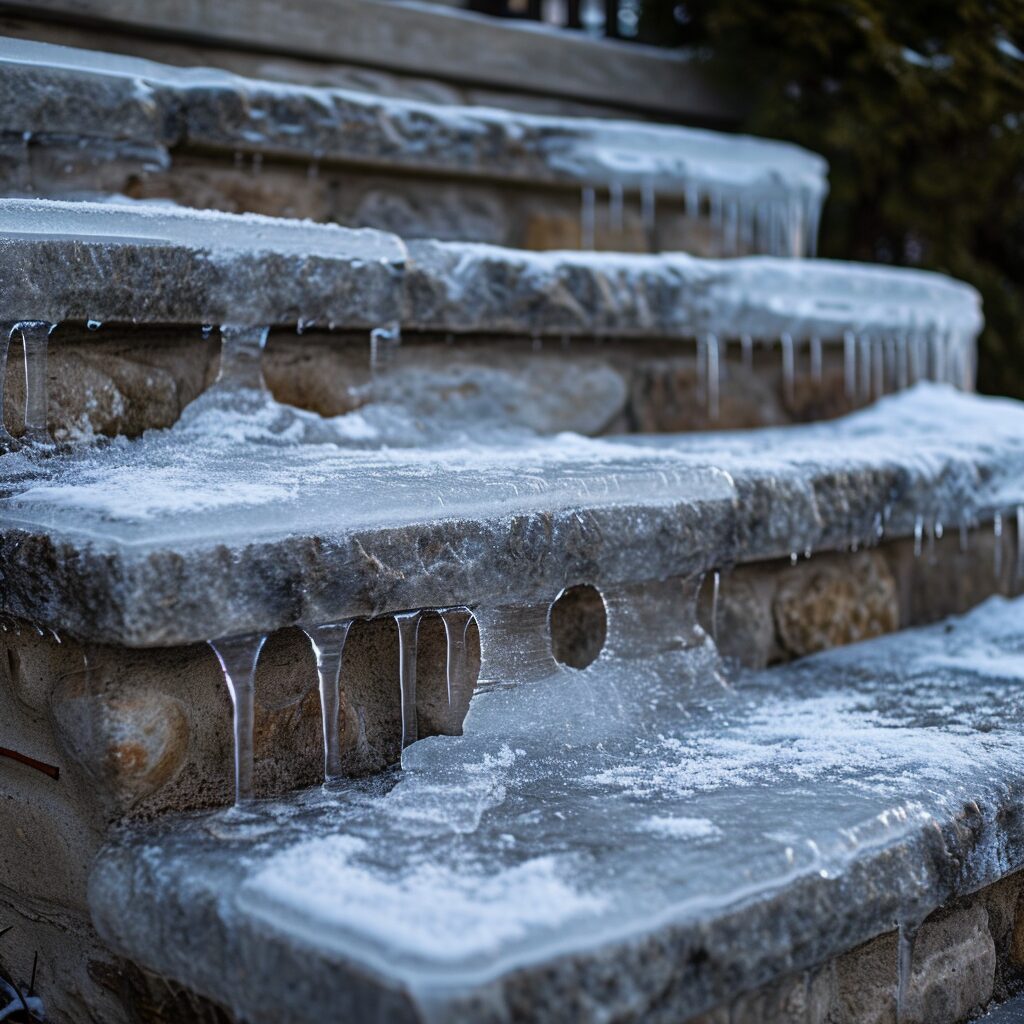De-Icers and Concrete Steps in Alberta
In Alberta, where winters are notably harsh, maintaining the safety and integrity of precast concrete steps is a significant concern for many property owners. The icy conditions characteristic of Alberta’s winter months often lead to the widespread use of de-icers. These substances are undeniably effective at melting ice and snow, providing necessary safety in slippery conditions. However, their use can also bring about unexpected complications for precast concrete steps, particularly in the face of Alberta’s extreme winter weather.

Understanding De-Icers
De-icers come in several forms, including salt-based (like sodium chloride), calcium chloride, and magnesium chloride. These substances work by lowering the freezing point of water, effectively melting ice and snow on contact.
Risks and Damages
The use of de-icers is not without its risks to concrete steps:
Chemical Reactions: Some chemicals in de-icers can react with the concrete, leading to surface scaling and spalling.
Freeze-Thaw Cycles: De-icers can increase the number of freeze-thaw cycles. As water seeps into the concrete and then freezes, it expands, causing cracks and structural damage over time.
Corrosion: If the concrete steps have metal reinforcements, some de-icers can accelerate corrosion, weakening the structural integrity.
Choosing the Right De-Icer
It’s essential to choose de-icers carefully. Look for options that are less harmful to concrete, such as calcium magnesium acetate. Alternatively, sand can be used to provide traction without the chemical impact on the concrete.
Best Practices for Using De-Icers
When using de-icers, it’s crucial to follow these best practices:
- Apply them sparingly and only as needed.
- Once the ice melts, promptly remove the slush and excess de-icer to minimize its contact with the concrete.
Preventative Measures
There are steps you can take to protect your concrete:
- Seal your concrete steps periodically to prevent water and de-icer penetration.
- Conduct regular maintenance checks, especially after winter, to identify and repair any early signs of damage.
Warranty and Risks: De-Icing and the Curing Process of Westcon’s Precast Steps
When considering the maintenance and longevity of Westcon’s precast concrete products, it’s crucial to understand the implications of using de-icing agents. Westcon prides itself on the durability and quality of its precast concrete steps, which are designed to withstand the rigors of Alberta’s climate. However, the application of de-icers is known to void the warranty on all steps provided by Westcon.
This is especially pertinent during the early life of the concrete. While concrete steps may feel sturdy shortly after installation, reaching approximately 70% strength within the first three days, they are still in a critical curing phase. It typically takes a full 28 days for concrete to achieve its optimal strength. During this time, the concrete is highly porous and more susceptible to damage from de-icing chemicals. As a result, using de-icers on concrete steps before they have fully cured is not only risky but can also have long-term detrimental effects on the integrity of the steps.
Customers are advised to exercise patience and refrain from using de-icing agents during this crucial curing period to ensure the longevity and structural integrity of their investment in Westcon’s precast products.
